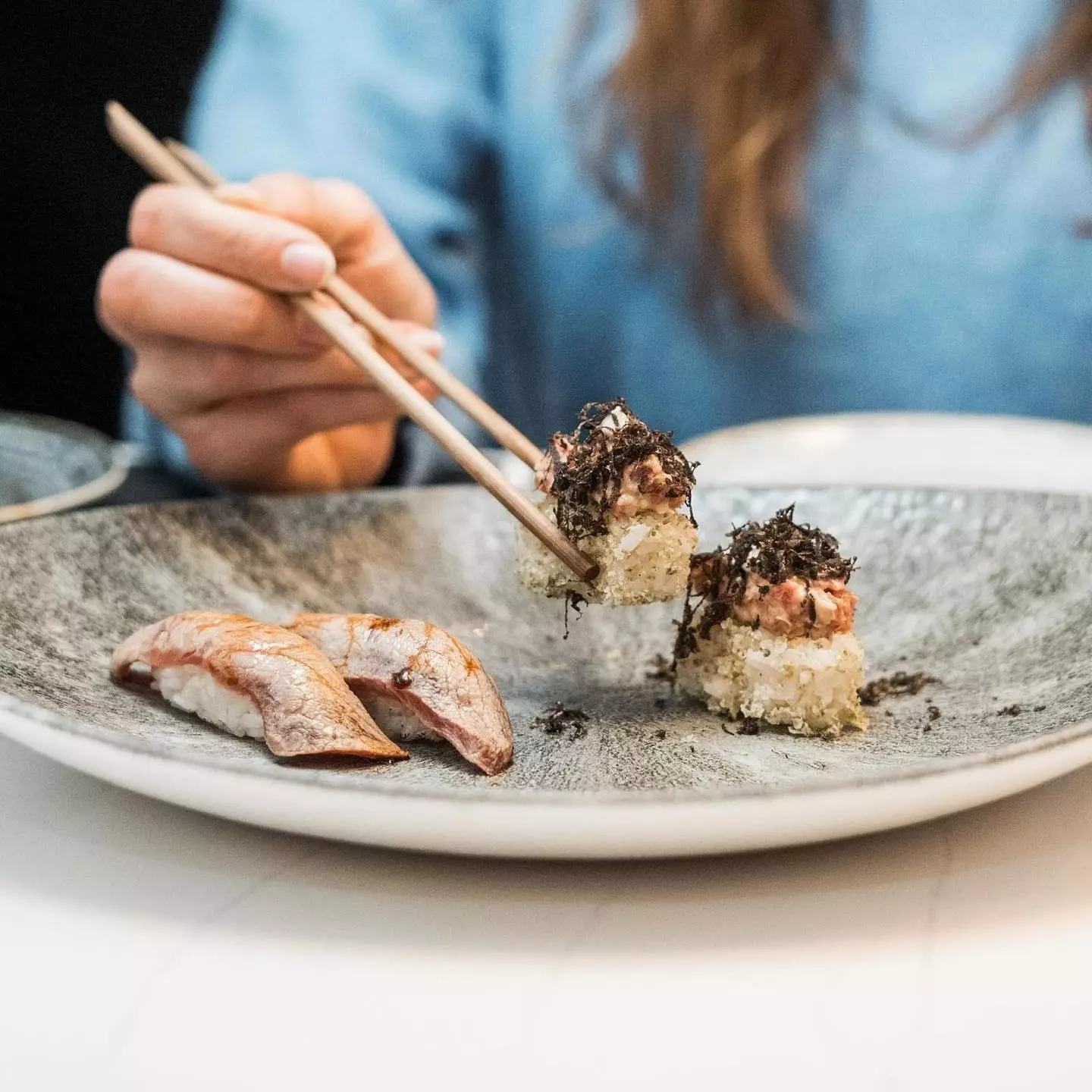
OIL Malaga
The Soho of Malaga , before being called that, was one of those territories that the land wins over the sea following orders from above. An expansion of sober facades and a port soul to which only neighbors, merchants, breakfast officials, men with drinks at midnight and the women who served them appeared. Also some clueless person who went to look for original posters of classic films in a little store more exotic than the sex shops that supported the area.
Francisco Umbral argued that cities are nothing more than an excuse to write, which, far from being disdainful, gives cities a power that can instigate the best literature. And the Ensanche de Heredia, of course, had stories to tell.
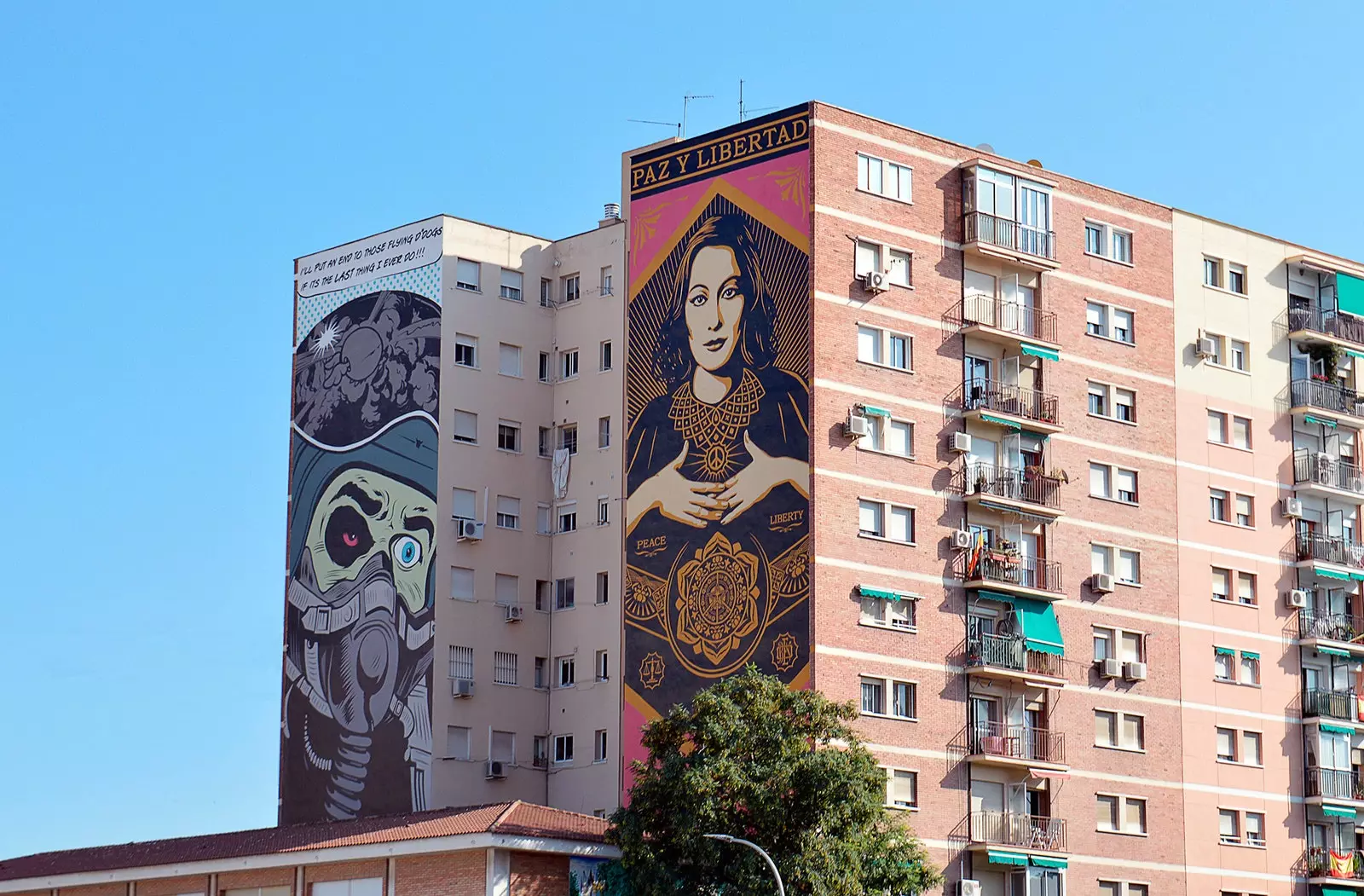
Obey and D*Face
The story was transformed when those neighbors and those merchants not only demanded changes, but also contributed ideas to change. Streets were pedestrianized, rents for entrepreneurs were subsidized, festivals and craft markets were organized. The presence in the neighborhood CAC Málaga, the city's Center for Contemporary Art, prompted those gloomy facades to have some color.
Thus, in 2010 and hand in hand with the initiative MAUS , the urban artists arrived Obey, D*Face or Boamistura to give another narrative to the neighborhood. And the Ensanche de Tomás Heredia, like so many other neighborhoods in the world that have been revitalized through art - Bushwick in New York, Wynwood Walls in Miami- he saw how hostess clubs gave way to specialty cafes, creative studios took over import-export offices, and decaying buildings filled with scaffolding and vacation rentals.
Of those festivals, photographic exhibitions, cheap rents from the beginning of the previous decade little is left, although the animals of the street artists Roa or Dal East continue to bear witness to this, from the party walls.
There are still readers for that story. Tourists are still seen wandering the neighborhood with their chins raised, looking for traces of contemporaneity in the facades. Nevertheless, That original idea that Soho would become a breeding ground for the most alternative and creative things in the city has been fading over time, gentrification through. Of course, art still exists. But in the kitchen.
If before crossing the Alameda that separates the widening of the central almond it cost him even at least lazy, the gastronomic offer that has been concentrated in Soho has ended up animating the zebra crossings.
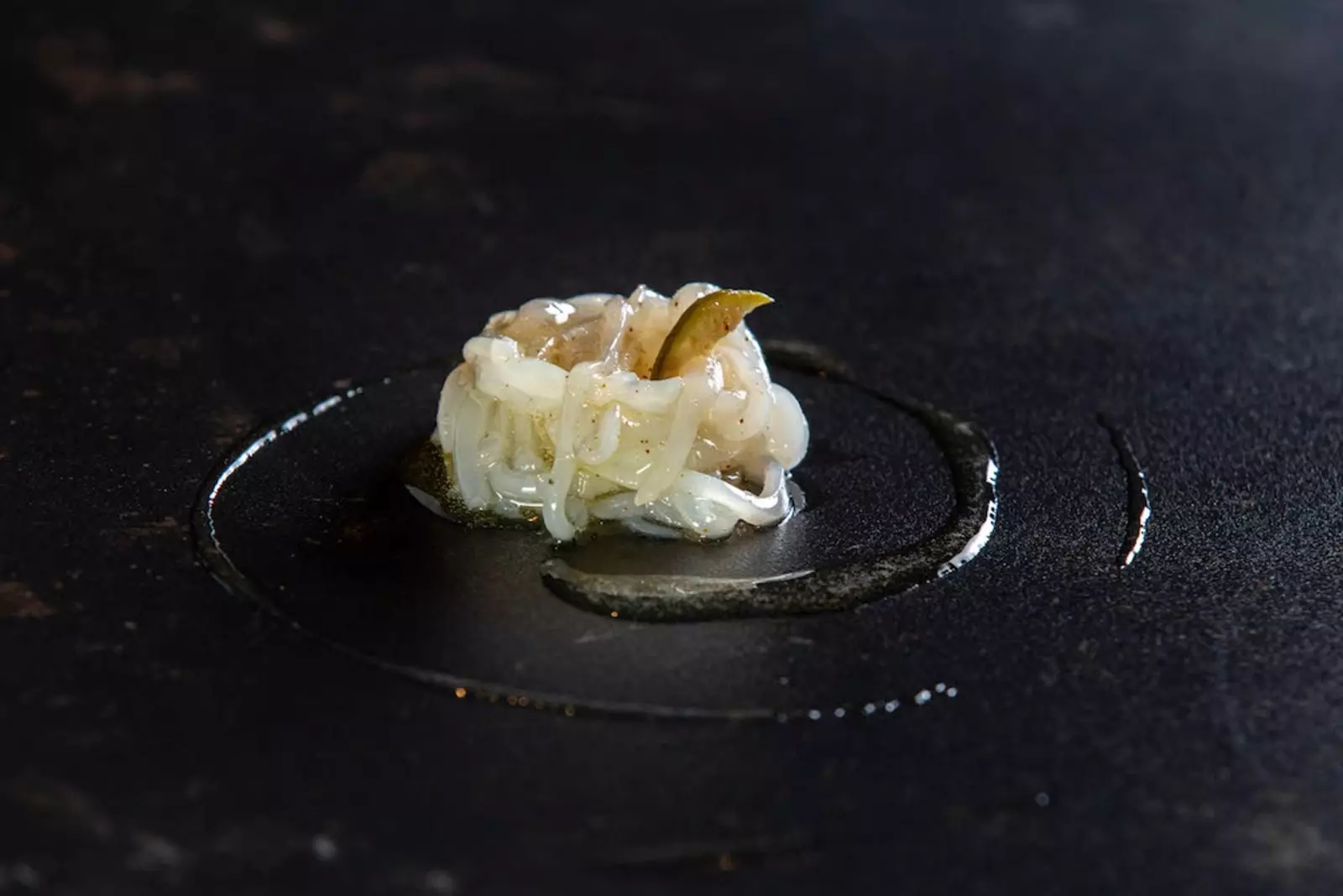
Squid kru with butter sauce
There are still classics. They have been there for more than two decades. The Iberian Inn (Calle San Lorenzo, 27) and its sirloins or the third generation of shellfish from Noray II (Pinchon street, 10). Also that little Basque corner that is the Eguzki (Pasaje de Valencia, 6) with its tremendous peppers stuffed with cod.
One of the best sushi in the city was installed in the CAC Málaga and laid the foundations for the new proposals: Oil I bring art to art. More international options, such as those from mamuchis (Calle Casas de Campos, 27), brightened up one of the main arteries of the neighborhood with their Greek, Mexican, Indian dishes and their Thai soups. Nearby, the boat house restaurant (Casas de Campos street, 23) decided to open his seafood bar, CB23.
And now in the new Hotel Soho Boutique Colon (Alameda Colón, 5), one of the most notorious openings in the city is installed after the inauguration of Kaleja by Dani Carnero: dig it, the little brother of La Deriva -or the older brother, depending on how you look at it-, with the man from Malaga Juanjo Carmona in front of the kitchen. The perfect excuse to tour the best of what is already the gastronomic epicenter of the city.
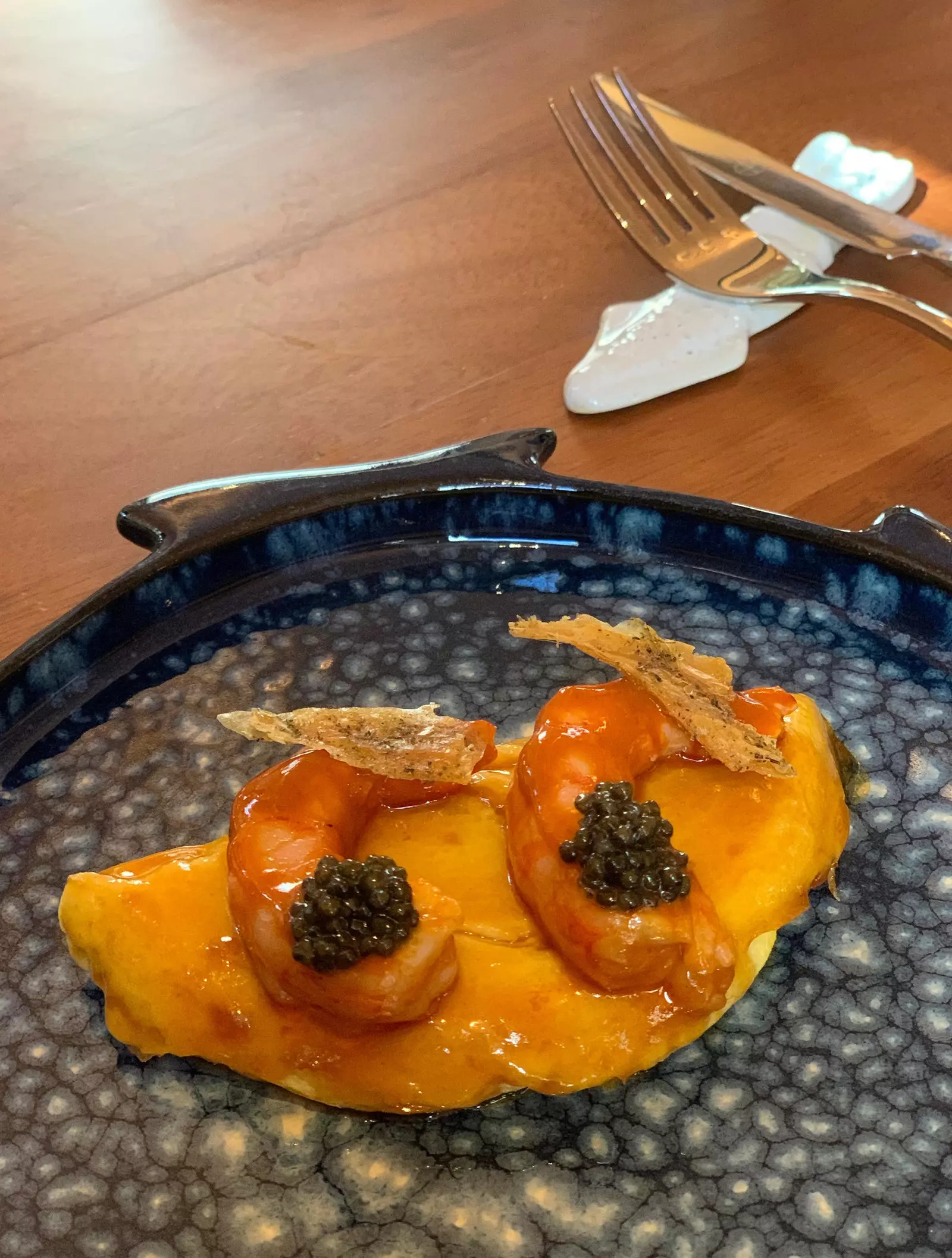
The menu is based on fish and shellfish from the fish markets of Fuengirola and La Caleta de Vélez
CAVALA (Alameda de Colon, 5)
Juanjo Carmona, gastronomy long-distance runner, has gone from managing his own family restaurant in Fuengirola -El Girón- to maintain the Michelin star of the El Lago de Marbella restaurant for three years. And now, hand in hand with the always visionary Anthony Garcia, owner of the La Deriva group -which also brings together the homonymous restaurant, the Cobalto15 cocktail bar, now Cávala and the next Presagio- in Soho, concocts gastronomic plans in a kitchen of great character, that promises and keeps his word.
Here the sea occupies the sky. Not only because of the waves of wood that Miguel Seguí has designed for the ceilings of the premises, but also because the menu, based on fish and shellfish from the fish markets of Fuengirola and La Caleta de Vélez, is a tribute to its waters.
"We wanted to do some seafood and fish, but in Malaga there are already restaurants that are 100% products because there are many families with boats," explains Carmona. The solution, in his hands: “Since we are chefs, we are going to have the best product we can find and we are going to cook it. That will be Cávala”, they decided. To the adventure of cooking has also been added Juan Carlos Ochando, until now head chef of Bardal (Ronda). And a robbery.
Steamed mussels with coriander vinaigrette and corn and mustard soup they show the character of the cook: they are a calm, sensitive, simple snack. And like this one, grilled razor clams in marinara sauce or yellow squid. The omelette with red shrimp and caviar has come to stay.
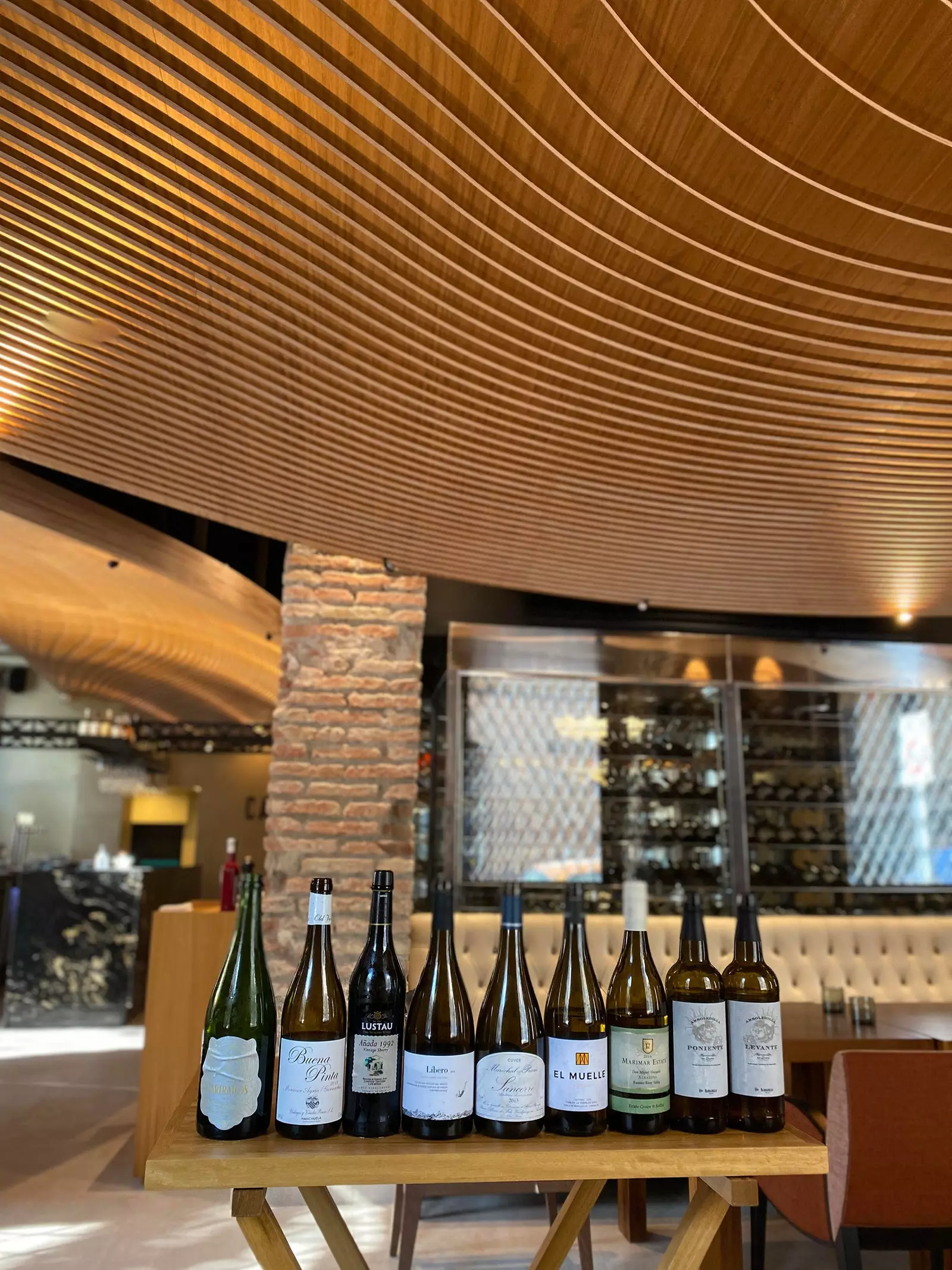
Its cellar is one of the most complete and round in the city
Its cellar of more than 400 references, with special attention to Sherry wines and those champagnes from small vignerons that have been and continue to be the group's trademark, it is one of the most complete and well-rounded in the city. Carlos Buxo, His sommelier demonstrates it with each glass he serves. If La Deriva has something, it is that he knows about the product, but also about building a team. Glenn Parker cheers the end with his desserts, who also promises good bread.
OIL (CAC Malaga, calle Alemán, s/n)
They were one of the first to settle in the neighborhood. In fact, they did it at the CAC Málaga itself. It's not all Japan here. If they got something right in 2012 Sergio del Rio and Rui Da Mata is in understanding that Mediterranean and Japanese cuisine are not so far apart. Thus, its letter is one and there are two that are intertwined through the product.
Del Río, trained at La Cónsula and in kitchens such as Martin Berasategui's, is in charge of giving Malaga gastronomy a shine, contribute technique and creativity to dishes as traditional as a Russian salad, some wild potatoes in which the bravo (a siphon) is Japanese or a suckling goat, yes, rolled up in the Vietnamese way. De Mata, a Brazilian sushiman, is the one who takes the fish by the fins and gives each piece the necessary cut.
the juicy tuna, bull and truffle tartare, Malaga horse mackerel ceviche -funny snack presented on half a lime-, or any of their niguiris They mark the line of the house, one of the first in Malaga to give value to Japanese cuisine. Desserts: from Puri Morillo and his Daza pastry shop (the lemon and meringue tartlet is impressive).
The letter evolves little by little, because they have had what many would call the "luck" of have some dishes that have soon become classics and that they could not replace even if they wanted to. “I'm so angry that I can't take it anymore,” Del Río acknowledges between laughs, “but I'm never going to remove them. As a chef, it is one of the dishes I am most proud of”. But novelties arrive with temporality -those hedgehogs!- and they do it to catch up with the classics. The key, “in the raw material”.
The Óleo group, which signs the Misuto and Soca kitchens together with Alejandro Salido, announces new features in its latest bet, ramen noodles (Barroso Street, 17), also in Soho. They are in the process of renewing their menu with the signing of the chef Francis Scratched , and with him they want "do more fun and current things and not be so limited to ramen."
And there may be more. Everything looks like it will taste like a hamburger, “but the classic ones”.
PRETTY GIRL CANTINA (Martínez Campos Street, 6)
She is Panamanian, but her culinary training has taken place in Mexican schools. She dominates the traditional dishes of Latin America with that she is finally returning to the fires and that is called doll game. Reyna Traverso she has her well trained.
After passing through restaurants like El Lago de Marbella, she decided to open her own gastronomic space, because In addition to technique, she was looking for freedom, "a less rigid way of working." Perhaps that is why her dishes transmit that naturalness that becomes joy.
Niña Bonita is a small space that houses a large kitchen. In her letter, there is no lack traditional dishes like tacos -the low-temperature beef with green tomatillo sauce, cilantro and lime is a must-, the quesadillas -if it is season, the star is the huitlacoche- or the chilaquiles. Not even very balanced aguachiles. Nevertheless, We are not just another Mexican restaurant.
Corn tortillas are corn tortillas. And this is not easy to find. They are made with GMO-free fair trade Mexican corn flour grown by indigenous people. The moles, homemade. The Mexican green tomatillo, the jalapeño and the habanero pepper are grown for her in the garden of Coín in season. The same happens with the avocado, of course, is from the Axarquia.
“I consume local products whenever possible. It is a way to give more value to the surprising flavors that I learned in Latin America”, Traverse comments. Those same flavors that have been proposed to transfer to Soho Malaga.
Its lacquered pork rib with orange and cane honey accompanied by refried beans, green tomatillo sauce, tatemada and pico de gallo is an open secret in the neighborhood. Like its moles -poblano, pink-. The ones off the menu are always a hit and a true reflection of the character of a cook who enjoys and makes people enjoy cooking.
THE ANTXOETA (Barroso Street, 7)
The Catalan Paul Knight regent since 2016 The Antxoeta, a place of market food, culinary technique and a lot of personality. Sometimes overwhelming. He decided on Soho because he reminded her of the Gràcia neighborhood in Barcelona, with its alleys and its old houses. They soon branded him crazy. He set up his Antxoeta on a little-traveled street outside the gastronomic circuit and with the audacity of "not offering Russian salad tapas".
The play did not go wrong. His proposal based on the good market product, local and seasonal was gaining followers. There was talk of his stews, his game dishes, the treatment he gave to the fish here, the Mercado del Carmen, the markets of Algeciras and Motril. That Barcelonan trained in Euskadi with old school cooks - who also gave him life lessons - knew what he was doing.
His menu is constantly being updated – “At the moment I am glad that the QR codes have been installed”, he jokes-and he promises now more vegetable-based options – miso-lacquered aubergines, roasted cauliflower – and the option of a "more gastronomic" tasting menu of ten dishes.
Nevertheless, Iñaki's baby squid will continue there, one of his mentors from the north, "with French fries instead of rice, like he used to make them," and Maruchi's cannelloni, his mother, shining in the letter.
“We have to revisit the simple product that can also be haute cuisine. I love foie gras and caviar, but with a simple sardine you can make a more than worthy gastronomy”. To dignify has been said!
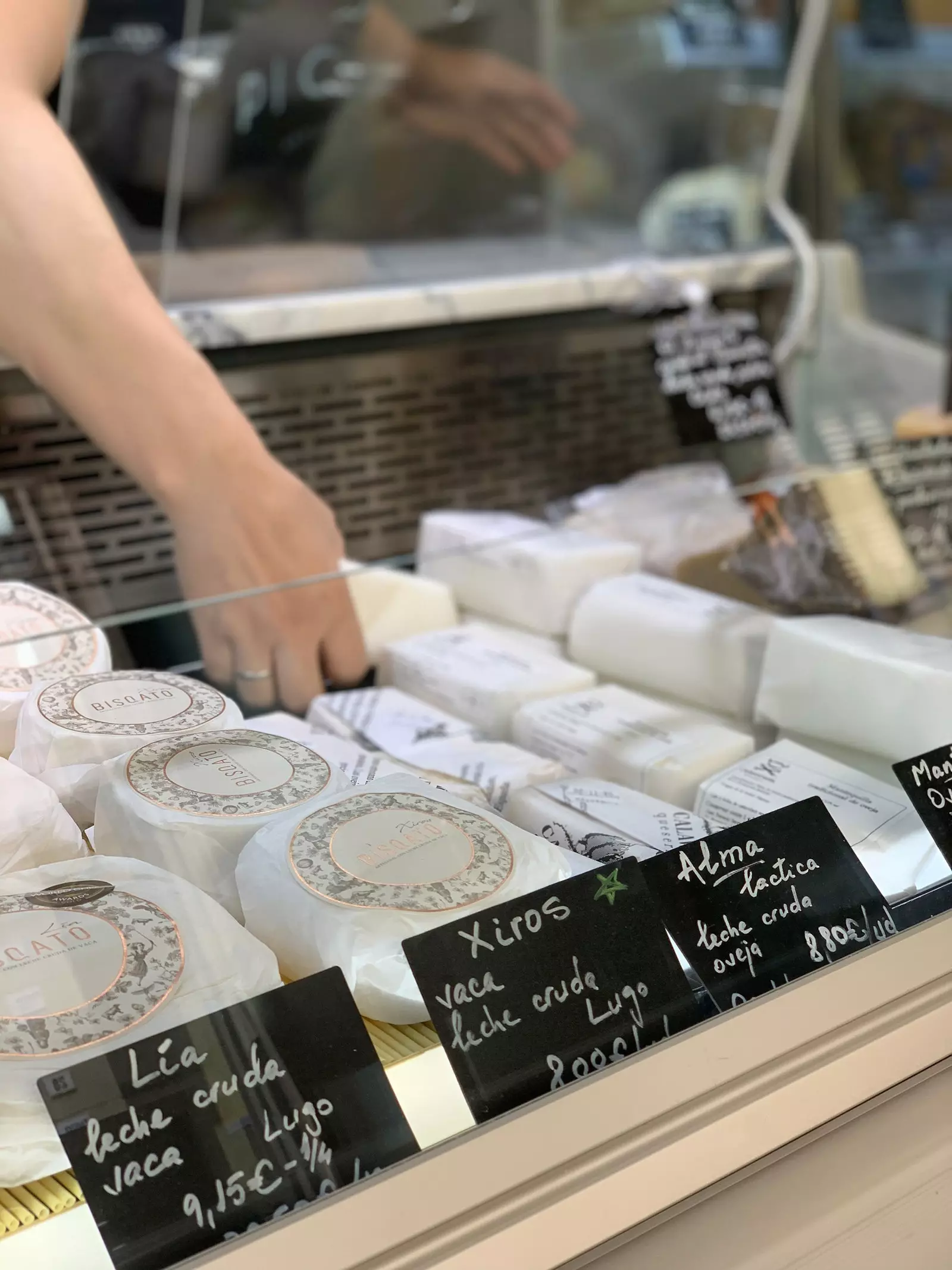
His refrigerators house more than 40 references of artisan cheeses
PICNIC (Vendeja Street, 11)
“When I opened our first order of artisanal cheeses I got goosebumps. Suddenly I traveled to my grandmother's house in Romania, where I got to sleep with the goats from whose milk we later made cheese. And I knew that it was what I had to dedicate myself to.”
Aura Damián's eyes still mist up when talking about that revealing moment that is now reflected in the refrigerators of this small local Soho and that led him to specialize in the field. “I have an animal instinct with cheese”, she admits proudly.
They coexist in them more than 40 references at the same time of artisan cheeses from different origins. They have reached 100 if seasonal ones are taken into account. French and Italian names are not lacking, but if Picnik stands out for something, it is its national team with the presence of dairies such as Biscato (Lugo), Siete Lobas (León) or Granja Cantagrullas (Valladolid). Andalusia also hits hard with the Calaveruela cheese factory (Córdoba) -from which they also sell an exquisite sheep butter- Cheeses and Kisses from Jaén and his fantastic Olavidia or the El Bosqueño cheeses that are born in the Sierra de Grazalema (Cádiz).
Aura Damián is not alone in this delicious front. her husband, Christian Mica -who instead of with cattle slept in the vineyards of his grandfather, also in Romania-, is the other half of Picnik. Between the two of them they attend the counter and the pair of Tasting tables that overlook not only cheeses, but also other artisanal products such as sausages, wines, jams and chocolates. And also, they do tastings.
SANTA CINNAMON (Tomás Heredia street, 5)
The one in Soho was the first place that Juan Pablo Fasano and Matías Savino opened in Malaga to fill the city with aroma of good coffee. This cafeteria that has gone from being a corner to the center of the neighborhood It works grains from different origins that refine in its own micro-roaster.
There is seldom free space on its terrace.** Its extensive menu of specialty coffees, teas and juices and its range of homemade pastries** is a must for locals and foreigners. From the beginning they saw it clearly: "Soho was a neighborhood with projection, with that underground air that fits with a concept of specialty coffee like ours." Also an alternative to a center saturated with catering establishments.
They started with a commercial coffee, but after various training sessions with national specialists in the specialty coffee sector, they decided to try a third mill in this category. The thing worked. The previous grain disappeared to give way to self-roasted beans from Brazil, Colombia, Uganda, Mexico and Ethiopia, "our workhorse," Fasano describes.
It is not the only thing that has changed since they opened their doors in 2015. They have expanded and, in the place next door, awaits their micro-toaster and what they call a ‘laboratory’, where they develop their internal training and where they offer tasting and brewing courses to their clients.
LEVI ANGELO ICE CREAM SHOP (Tomás Heredia street, 11)
The Belgian Levi Ángelo was caught in the March confinement with the gate of his premises halfway up. He had decided to expand his business and bring Soho to the capital - "a neighborhood as author as our handcrafted products"- the ice cream parlor that was already working at full speed in the Malaga town of Frigiliana. He had to wait, but the energy did not go away in the process: he has chocolate in his veins.
Trained in Belgium with master pastry chefs such as the influential Dominique Persoone, with experience in workshops in France and Dubai, he offers pastry products from Soho, among which the chocolates that he makes with chocolates from major brands such as Callebaut or Valhrona, but also from small producers in Peru or the Dominican Republic. In addition, he offers pralines, mendiants, muffins, almond tiles, candied fruits and whatever comes to mind.
However, in Malaga ice creams are not disgusted and in this the Belgian, who also has Italian roots, is not far behind either. His sorbets are made every day with local and seasonal products. The origin is not only important when it comes to Malaga and Andalusia, but also to the quality of the product: “Almonds are from Malaga, but hazelnuts, for example, are from Piedmont”.
It has been one of the last openings in the neighborhood and s us ice creams with basil and white chocolate, raspberry with green tea, tiramisu or dark chocolate -of course- with orange, They are already becoming another reason to cross the increasingly narrow margin that separates the center of Malaga from its port waters.
